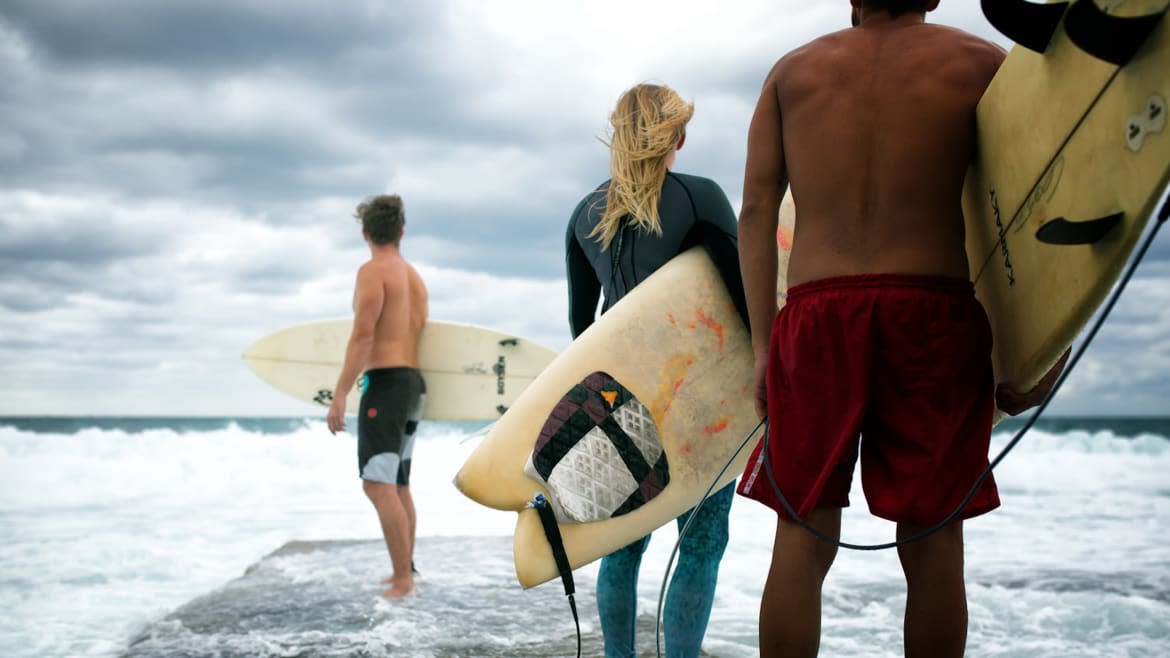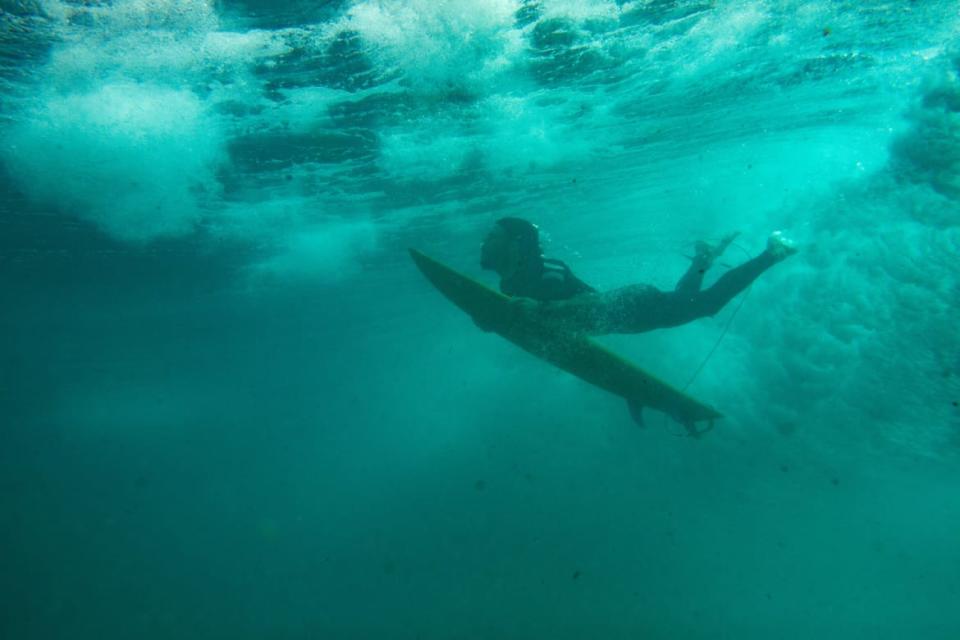The Dangerous Lives of Cuban Surfers Fighting for Freedom

Our 1958 Toyota Land Cruiser, a car that borders on modern in Cuba, rolled to a stop on the outskirts of the famed Guantanamo Bay naval base. Cuban military men in fatigues approached the rear door where our group, consisting of myself, my filming partners Seth, Marco, and Tyler, and two Cuban surfers named Frank and Yaya, were packed in like sardines with our legs all jammed in a formation we dubbed “the zipper.” While the guardsmen probed around our vehicle, intently eyeing the stack of surfboards strapped precariously to our roof, I found myself thinking of a line from one of the interviews we’d conducted days earlier with Yaya:
“It doesn’t matter if it’s old or new, the mark or the brand, when we have a surfboard in our hands it is a treasure.”
Over the first three months we’d spent filming Havana Libre, the meaning of this line took on several forms as we began to slowly evolve our understanding of the complicated context in which Cuban surf exists, and this stop was the manifestation of a reality that we’d often imagined but didn’t entirely comprehend. After all, surfing in Cuba was not exactly… legal.
The circumstance that enabled us to embark on creating a film about this diehard and underground surf community was the sudden thawing of a hostile Cold War-era relationship between Cuba and the United States. It was the first time in roughly 60 years. Like many, our interest was sparked by the nostalgic images of tropical antiquity and the opportunity to seemingly step into the past, but what captivated us was the pursuit by a younger generation to escape the time capsule and chase their dreams.
Inside Frank Gonzalez’s home in west Havana, the first thing I noticed was the faded green walls peeking from the bedrooms that were papered with wrinkled covers from old surf magazines and stickers of American skateboard brands. It was such a familiar collage from my own childhood, but I soon came to learn how much value every image held. When Yaya says surfboards are treasure, her sentiment goes far beyond the board itself. It extends to every morsel of information from the outside world; every image and opportunity to grow more connected to the broader surfing world beyond the blockade. We first heard her line as a commentary about how much passion they had for surfing, but over time it began to represent every obstacle they have to overcome simply to be able to surf.
In one of his interviews, Frank commented, “We try to stay as far away from politics as we can, but eventually it always traps you.”
The film we set out to make had very little political ambition, but like everything in Cuba, eventually we too were trapped by it. Political tendrils are embedded in the DNA of every Cuban story, and there is no way to tell an honest anthology of surf culture on the island without including politics to some degree. In essence, the blockade is the foundation of their disposition.
There is no surf shop in Cuba. The closest thing to resembling one is Frank’s makeshift workshop where he has a collection of assorted chunks of foam and handmade tools, bartered carbon fiber and scraps of fiberglass from boatyards, and other ingredients to make and repair boards that have taken him years to amass. His craft was developed by dissecting every photograph that found its way into Cuba through the bag of some tourist. He’d analyze what the shape of the board should look like, how people positioned their hands to dive under waves, and how it looked as surfers shifted their balance to carve. Without internet access, each piece was vital for taking the next steps forward.
This scarcity in material makes the barrier to entry very high. As Frank says, “If you want to be a Cuban surfer, you have to really want it.” On top of the scarcity of material is an equal scarcity of general knowledge. Your average Cuban most likely doesn’t know that a sport called surfing even exists. When traces of surfing did finally reach Cuba, its timing happened to coincide closely with the fall of the Soviet Union, Cuba’s lifeline at the time, and yielded the country’s biggest economic crisis. The ensuing exodus of tens of thousands of Cubans via shoddily built rafts deepened the conflict between Cuba and the United States and transformed the ocean into a highly policed and dangerous place for Cubans to enter.

It is important to understand this history because, while there was no signpost explicitly saying “surfing is illegal,” it is the reason that it has been forced to exist in the shadows. For decades, water activities were prohibited and surfers risked incrimination for fear that they were fleeing to America.
And this brings us back to Guantanamo, where we sat with bated breath hoping that the soldier reprimanding us doesn’t notice the blinking red light of a recording GoPro that he’d unknowingly repositioned, framing a perfect portrait of himself. One of the men informed us we’d entered into a high-security zone due to our proximity to the American base, and that several days prior they detained a man who had triggered a series of alarms trying to escape on a windsurfing board. It was in this moment that we sort of realized the gravity of our surroundings, and the reality of what it means to be a surfer in Cuba.
Throughout the interrogation, their attention kept resting back on our cargo on the roof, and, despite all our camera gear and computers, we were all hoping for the same thing.
“Please don’t take their boards…”
After about an hour we were told we could carry on with our voyage. They said they’d be monitoring us and under no circumstances were we allowed to enter the water anywhere along the coast, nor were we allowed to take our cameras out at any point.
We pulled off the road just after our stop and after almost a thousand miles of coastal exploration, we could see a river mouth in the distance, opening into the bay with a beautiful peeling wave breaking down the presumably land-mined shores of the base. We took a moment to soak it in, and then hit the road looking for something new.
HAVANA LIBRE is world premiering as the opening night virtual film at the upcoming Big Sky Documentary Film Festival in Missoula, Montana, on Feb. 19
Get our top stories in your inbox every day. Sign up now!
Daily Beast Membership: Beast Inside goes deeper on the stories that matter to you. Learn more.

